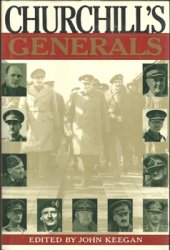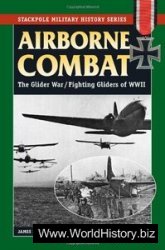Tuals outside it that patriotism was an old-fashioned virtue; they transferred their allegiance to world communism, not then understood to be a system of tyranny. Among them were Harry Dexter White, who rose high in the United States Treasury; Donald Maclean, who headed the American desk in the British Foreign Office; and H A R (Kim) Philby who headed the anti-Soviet section of the British secret service before first Maclean and then he defected to Moscow. Maclean’s escape was aided by Anthony Blunt, another secret devotee of communism, who spent the 1939-45 war in the British security service before becoming an eminent art historian.
The British security service performed the improbable feat of turning round all the spies the Germans thought they had planted in Great Britain in 193945: a double-cross achievement of major import, since it helped to ensure the success of the Normandy landing by making Hitler believe it to be a feint.
Before World War II began, Mussolini had benefited greatly from a spy, a domestic servant in the British embassy in Rome, who kept him fully informed of British policy during the Abyssinian War of 1935—36. Similarly, Hitler studied French, British and Czechoslovak policy in detail during the Munich crisis of 1938, because his research office had broken the French and British ciphers. He did not then know that Frantisek Moravec, head of Czechoslovak intelligence, had bought for half a million dollars the services of Paul Thummel, a senior German security officer who correctly predicted weeks in advance the dates of the German invasions of Czechoslovakia, France and Russia.
Another spy who predicted correctly the Nazi attack on Russia, Richard Sorge, was another secret communist, a Russian-born German whose cover was that of Nazi war correspondent in Tokyo. He found out, and told Moscow, that the Japanese intended to move southwards against the British and Dutch, not westwards against the Russians: invaluable news. Sorge was executed by the Japanese in 1941 and Thummel by the Germans later.
A Polish mathematical genius and a spy hired by the French, combined with the carelessness of German signals operators and the engineering techniques of the British, managed to unravel the workings of the “Enigma” cipher machine the Germans supposed unbreakable. This enabled the British, who soon shared the secret with the Americans, to follow much of what the Germans were saying to each other at every level of command. Similar achievements by a US Army cryptological team led by an American mathematical genius, William F Friedman, enabled the Americans to break many Japanese machine ciphers (see magic).
Decipher could do marvels, but it could not do everything. For local detail, and as an insurance against a major change in the German ciphering system, the British and Americans serviced and stimulated numerous networks of spies in German-occupied territory during World War II. The British had had useful experience of such work already during the previous world war. One Belgian at least, Wal-there Dewe, organized a widespread information-gathering network in each war; in the end he was shot down by Gestapo agents at a suburban street corner of Brussels in 1944. In France, the young Marie-Madeleine Meric (later Fourcade) took over and led a group of spies that was eventually over 3,000 strong; 438 of them died in German hands.
More modern espionage is divided into elint, from electronic sources; sigint, from decipher and traffic analysis; and humint, from spies. Elint, through satellite photographs, is now said to allow the Kremlin and the Pentagon to review each others’ car parking patterns several times a day. Yet spies can still count for a lot: let two cases, one on each side in the Cold War, bear witness. Oleg Penkovsky, a colonel in the Soviet military intelligence service, provided invaluable data about Russian intentions during the Cuban Missile Crisis in 1962. Daulton Lee, to keep himself in drugs, sold to the Russians in the mid-1970s essential data about American secret satellites, collected for him by his friend Christopher Boyce. Penkovsky was executed; Lee and Boyce are in prison. MF.
Etaples mutiny. Major series of riots at the British infantry base camp at Etaples, September 9-14 1917. Harsh training and poor accommodation were major grievances. One corporal was executed for his part in the mutiny.
Ethiopia, British campaign in
(March-November 1941). After invading Italian Somaliland in February 1942, Cunningham advanced on Addis Ababa with 11th African Division from the southeast via Jijiga and Diredawa, and from the southwest with 12th African Division through Galla-Sidamo, while the “Gideon Force” of Ethiopian patriots led by Col Orde Wingate and accompanied by the Emperor Haile Selassie, invaded the north. The Duke of Aosta, the Italian Viceroy, abandoned Addis Ababa at the beginning of April, and withdrew to the mountain fastness of Amba Alagi, where he was forced to surrender on May 19. It took another six months to enforce the surrender of Gazzera in Galla-Sidamo and Nasi in the Gondar. WGFJ.
Etna Line, Sicily, Battles for (July 23-August 6 1943). LXXVI Panzer Corps (Hube) withdrew to this line, which stretched across the northeast corner of Sicily along the southern slopes of Mount Etna, hoping to hold it indefinitely. It was breached by II US Corps (Bradley) on the north coast, and by XXX Corps (Leese) in the centre. Hube gave up its defence after Mussolini had fallen on August 25, and Hitler authorized a deliberate withdrawal to the mainland.
Exocet missile. A widely used French radar homing anti-ship missile first used in action by Iraq in the Gulf War of 1980—88 and famous for its successes in the Falklands War of 1982. Air-launched Exocets sank destroyer Sheffield and aviation auxiliary Atlantic Conveyor. A land-hased Exocet damaged destroyer Glamorgan. Exocet exists as the 17ft (5.21m) 25 mile (42km) range ship-launched MM 38, the 15ft (4.7m) 30-42 mile (50-70km) range air-launched AM 39, the 19ft (5.8m) submarine-launched SM 39 and the 18.9ft (5.78m) 42 mile (70km) plus range ship - or ground-launched MM 40. EJG.




 World History
World History









